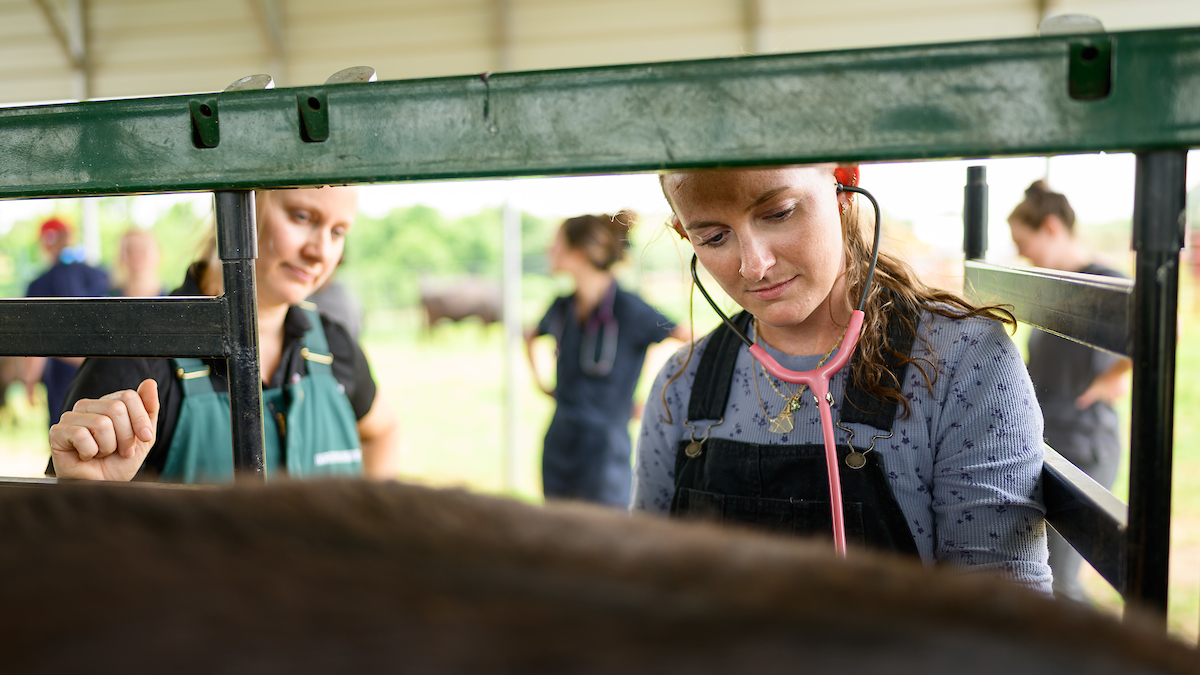February 2020 Research Roundup

A look at some of the latest published research from the NC State College of Veterinary Medicine.
Uncovering Mechanisms of Pain and Itch
The bioactive lipid sphingosine-1-phosphate (S1P) plays a role in pain and itch, according to a new study from Santosh Mishra, Hiroki Kittaka and Jennifer DeBrecht.
The research, published in Molecular Pain, sheds light on the still largely unknown mechanisms underlying internal stimulation of primary sensory neurons, such as lipids like S1P. The study revealed that the S1P-induced pain and itch responses are partially dependent upon the transient receptor potential vanilloid 1 (TRPV1), but not transient receptor potential ankyrin 1 (TRPA1) channels. Both TRPV1 and TRPA1 are ion channels known to be involved in pain and itch.
Canine Care for Veterinary Students
Providing on-site boarding and care options for dogs owned by veterinary students plays an important role enhancing the well-being of current students and recruiting future students, according to new research.
The study, which surveyed veterinary schools, found that while routine on-site kennel options for student-owned dogs were available at eight veterinary schools, 71.5% of students without such access felt that creating the options would be important or very important. Across all students surveyed, 76% felt it was important to have on-site dog housing/care available. Pet ownership is known to improve overall health and reduce stress, though dog ownership for veterinary students can be challenging because of a full academic schedule comprising long hours.
Regina Schoenfeld is a co-author of the student published by the Journal of Veterinary Medical Education.
New Approach to Treating Canine HE
Manual therapeutic plasma exchange (TPE) could be a possible strategy to manage clinical signs of hepatic encephalopathy (HE) in dogs, according to research believed to be the first published report of using manual TPE to manage HE.
The study, with authors including Christine Culler and Alyxandra Reinhardt, outlines the successful use of manual TPE in a small canine patient and notes that it could be effective when conventional medical management is insufficient in treating HE, when brain function loss occurs when a liver doesn’t remove toxins from blood. TPE has been used in people to treat conditions such as drug and toxin removal and liver failure.
The Journal of Veterinary Emergency and Critical Care published the research.
Understanding Chimpanzee Social Order
Research co-authored by Kara Walker has found that dispersal decisions among female chimpanzees are most influenced by inbreeding avoidance and kin cooperation, instead of intrasexual competition.
Sex-based dispersal of individuals away from their natal group before breeding is prevalent among animals. The research notes that while kin competition rather than kin cooperation has been emphasized in theoretical models of dispersal, in female chimpanzees kin cooperation appears to be a more important force than competition. The research is published in Current Biology.
Combating Common Vision Loss
A study led by Brian Gilger has developed a potential gene therapy approach to treating non-infectious uveitis, a common cause of vision loss.
Gilger and his research team found that using adeno-associated virus (AAV)-mediated expression of the HLA-G-1 and -5 transgenes in ocular tissues significantly decreased inflammation. The study concludes that such gene delivery could establish a long-term immunosuppressive effect that would serve as an effective therapeutic strategy for NIU and perhaps additional ocular immune-mediated diseases.
Scientific Reports published the research.
Health of Dogs in the Southeast
A retrospective look at dogs in the Southeastern United States with proteinuria, an excess of protein in the urine, found many had also been exposed to canine vector-borne diseases (CVBD), particularly those caused by to bacteria genera Rickettsia, Ehrlichia and B. burgdorferi.
Researchers Shelly Vaden, Ed Breitschwerdt, Erin Lashnits and Emily Purswell reviewed the cases of 209 proteinuric dogs seen between 2008 and 2015 and found that 34% of the dogs were exposed to at least one type of CVBD. Exposure to Rickettsia (19%), Ehrlichia (12%) and B. burgdorferi (9%) were most common.
Additional studies examining the potential causal relationship between CVBD and proteinuria are warranted, according to the research published in the Journal of Veterinary Internal Medicine.
~Jordan Bartel/NC State Veterinary Medicine


